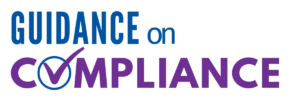Background
The Centers for Medicare & Medicaid Services (CMS) provides eligible Medicare recipients preventive services. In the first year following the recipient’s effective date, Medicare covers an Initial Preventive Physical Examination (IPPE). This is also known as a Welcome to Medicare visit. Each year after, the recipient may participate in an Annual Wellness Visit (AWV). The IPPE and AWV are intended to help patients maintain good health by catching signs of disease early on and taking a preventive approach to healthcare by utilizing screenings, assessments and counseling.
CMS started reimbursing for AWVs in 2011. Since then, many providers have seen significant growth in the Medicare population and have been providing AWVs for their patients. The AWV requires completion of a detailed checklist of elements that must be addressed for the provider to be paid by Medicare for the service. For the Initial AWV, the patient completes a Health Risk Assessment (HRA) prior to the visit. The HRA contains self-reported information relating to the general health, demographics, psychosocial risks, behavioral risks, activities of daily living (ADL) and instrumental activities of daily living (IADL). Other elements may be included in the HRA or asked by the provider during the visit include family medical history, advanced care planning, current healthcare related providers and suppliers risk factors of depression, review of functional ability and level of safety in the home.
The AWV is not a routine annual physical exam. While basic measurements are taken for weight, height, Body Mass Index (BMI) and blood pressure, the focus of the AWV is counseling the patient based on the information provided and any additional screening tests deemed necessary. The provider establishes a written screening schedule for the patient for a 5-10-year period utilizing age-appropriate covered Medicare Preventive Services and other recommendations from professional organizations. The provider also establishes a list of risk factors and conditions with primary, secondary or tertiary interventions recommended. Treatment options and their associated risks and benefits are noted. The patient is furnished personalized health advice, appropriate referrals to health education or preventive counseling services or programs.
Medicare recipients are eligible for subsequent AWVs each year after 12 months has elapsed since the last visit. The provider reviews and updates many of the elements from the initial AWV.
Case Study
LW Consulting, Inc. (LWCI) completed a probe sample audit of 25 AWV patients for a large medical group that provides Annual Wellness Visits. Medical record documents for each visit were provided. The auditors reviewed all the documents and physician notes in the medical record to check for completion of each of the required elements. In this audit, all 25 medical charts reviewed had some missing elements in the psychosocial risks, behavioral risks, Activities of Daily Living (ADL) and Instrumental Activities of Daily Living (IADL) areas. For example, topics such as loneliness, oral health, ability to dress, eat, toilet, shop, use the telephone and handle finances were not addressed.
It was determined that the physicians were following templates provided in the Electronic Medical Record (EMR) system. All the proper categories were being covered, but not the specifics in each area. To correct the issues, LWCI evaluated the template and identified gaps. The medical group quickly implemented the revised EMR template and provided training to the physicians. Once implemented, the facility was able to confidently provide AWVs knowing that the patients were receiving proper care and that claims being submitted to Medicare were accurate and followed all CMS guidelines.
Medicare has specific requirements for payment of services. For the AWV, every element must be addressed in the medical record documentation. Industry experts often note, “If it is not documented in the medical record, it did not happen.” If a required element of a service submitted to Medicare is not documented in the medical chart, Medicare views that as an improper payment. When improper payments are discovered, a provider must report and return self-identified overpayments to Medicare as outlined in Section 1128J(d) of the Social Security Act (the Act):
- Payback is required within 60 days of overpayment identification.
- Boundaries should be established to define the period in which the problem occurred. Where there are no established boundaries; providers should refund payments up to 6 years from overpayment receipt (generally known as the “lookback period”).
- If applicable, changes should be reflected in the cost report.
The CMS website has several educational tools and checklists to help providers navigate through the Annual Wellness Visit process as well as the Improper Payment guidelines.

